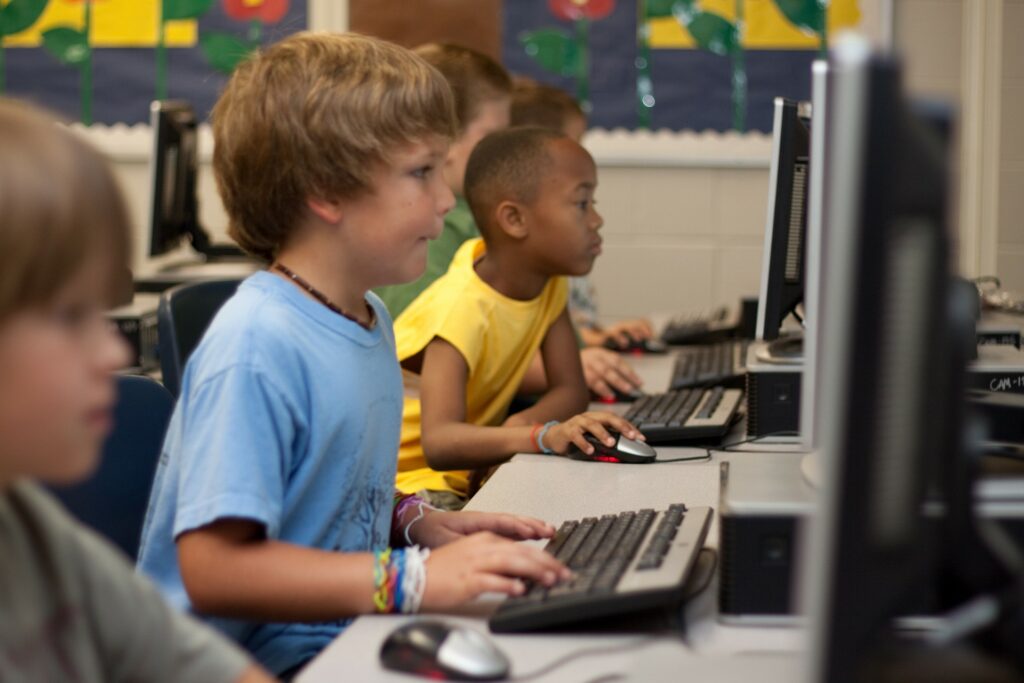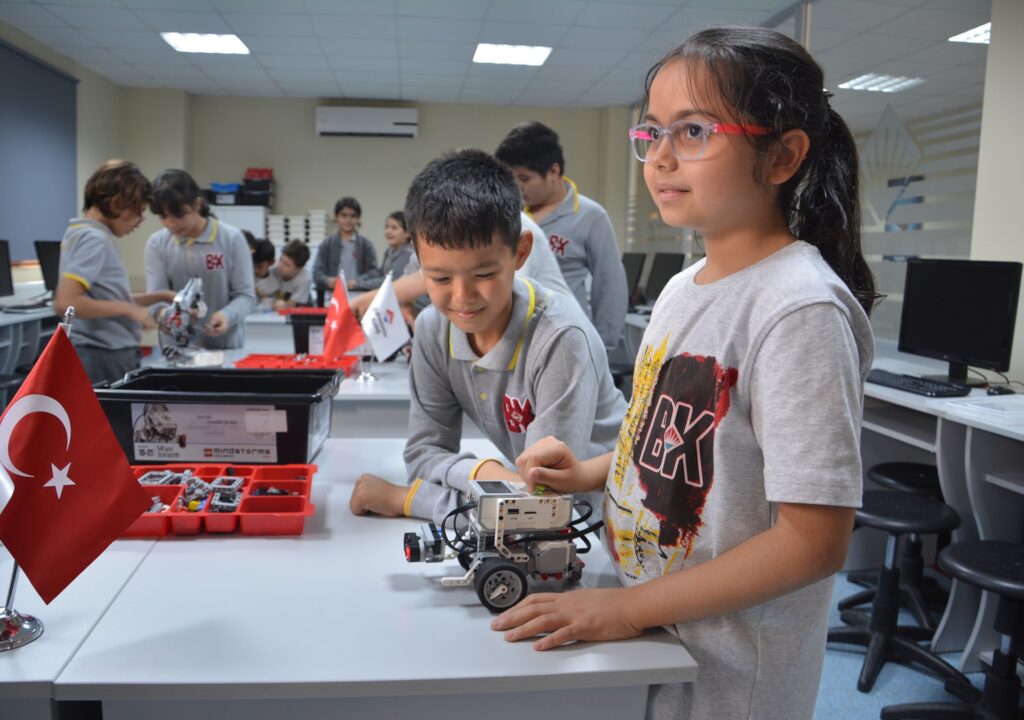


Problem solving is a process.
Work the problem by decomposing and breaking it down into smaller and more manageable parts. Recognize patterns which can be applied to help solve the problem. This will help formulate your plan of action and to design a solution.
Students will:
- Learn how to be both creative and expressive
- Develop sequencing skills that are foundational for later academic success
- Use math and language in a meaningful and motivating context
- Analyze problems and design projects
- Engage in critical thinking activities
- Be provided opportunities for social interaction through collaborative assignments
Click here to learn why coding as a literacy is important
Contrary to popular belief, literacy is not just the ability to read and write. It’s also about possessing the competence or knowledge in a certain area. Some of the strategies used to teach children to become literate include: “the writing process, recalling, summarizing and sequencing, using illustrative and descriptive language, recognizing literary devices such as repetition and foreshadowing, and using reading strategies such as predicting, summarizing, and evaluating.” (Bers 519) According to Bers, these instructional strategies carry over to computer programming fluency as well and “can be helpful for teaching how to code.” (524)
Coding as a literacy has become one of the basic fundamentals of learning like reading, writing and arithmetic. It is an important skill for children to learn because it engages computational thinking, which helps them to become proficient in critical thinking, and supports problem-solving across all disciplines. Coding fosters creativity and enhances problem solving skills, allowing students to become critical thinkers through collaboration and effective communication.
Children should learn the basic concepts of programming as early as possible. “The term coding originally applied to the act of creating in complex coding languages, but it is now also used to describe the creation of a sequence of instructions with tools basic enough for young children.” (Hutchison 494) In the early stages of their coding education, children learn how to be both creative and expressive. “In the process, children learn to solve problems and design projects, and they develop sequencing skills that are foundational for later academic success. They also use math and language in a meaningful and motivating context, supporting the development of early-childhood numeracy and literacy.” (496) These beliefs are supported by the American Library Association’s Libraries Ready to Code initiative, which includes an extensive supply of coding and computational thinking activities.
The real question is, how does one go about teaching young children about the science of coding and still maintain their interest? They can learn the concepts of coding in a classroom, in an after-school club, or from instructional textbooks. However, these resources can limit a young child’s ability to absorb the concepts because they can be uninteresting and routine. A far better way to reach these young minds is to expose them to children’s books that will both entertain and teach them at the same time.
Coding as a literacy utilizes skills such as computational thinking and problem solving, which should be learned in conjunction with traditional literacy (i.e., reading, writing, and arithmetic). As the literacy of the 21st century, coding engages new ways of thinking, communicating, expressing ideas, as well as collaborating with others.
Combining the ideas of traditional literacy and computer science are a successful formula to teach coding to children. This strategy can be explored through well-known children’s books, songs, and nursery rhymes, to name a few because there are similar concepts between traditional literacy and coding literacy:

It’s also important for students and educators to recognize that computational thinking can be applied across multiple disciplines, including but not limited to technology and computer science. Computational thinking is the common denominator of critical thinking, STEM (science, technology, engineering, and math) learning, and project-based learning. In addition, it increases confidence in dealing with ambiguous, complex or open-ended problems.
Computational thinking is comprised of four facets – decomposition: breaking something down into parts and dividing up a task; algorithms: a sequence of steps to solve a problem; pattern recognition: finding similarities and differences between the parts to make predictions; and abstraction: reviewing how the solution transfers to similar problems.
According to the International Society for Technology in Education (ISTE), “today’s students must be prepared to thrive in a constantly evolving technological landscape.” They can use these valuable skills and create a tremendous impact on the world. By employing the language of computational thinking at an early age and beyond, students will become more than just consumers of technology.
The relationships between cognitive processes, the pedagogy of programming, and computational thinking fall within the realm of high-order thinking skills, which is referred to within Bloom’s Digital Taxonomy’s cognitive domain. When students apply computational thinking, they are in the analyzing stage, where they break down concepts into parts and determine how these parts relate to one another.
Redefinition allows for the creation of new tasks which was previously inconceivable. This is apparent with the use of popular children’s books and nursery rhymes in order to teach students about coding concepts such as loops and conditionals, using Scratch programming software.
According to the Constructivism theory, learning is active rather than passive which is clearly evident in coding. Through persistence, learners develop confidence and competence and succeed in accomplishing increasingly complex tasks.
Most importantly, students must be taught how to use the internet safely and responsibly. Since they will most likely be creating username and passwords online when using online applications and software, they should be taught about Digital Citizenship and the importance of keeping their personal information safe.
Technology allows for a fun and engaging learning experience. Despite some of its drawbacks, like screen time, hardware, software, and internet issues, the benefits of educational technology are limitless. I believe computer coding is an essential 20th century skill all learners need in order to thrive in our global society. When literacy education is taught in conjunction with programming concepts at the primary level, children will be ready for the future jobs that await them.
Works Cited
Bers, M. U. (2019). Coding as another language: a pedagogical approach for teaching computer science in early childhood. Journal of Computers in Education, 6(4), 499-528. Accessed 30 Nov. 2020.
Hutchison, Amy, et al. “Using Coding Apps to Support Literacy Instruction and Develop Coding Literacy.” The Reading Teacher, vol. 69, no. 5, 2016, pp. 493–503., www.jstor.org/stable/44001995. Accessed 30 Nov. 2020.
“ISTE Standards for Students.” International Society for Technology in Education, 2020, iste.org/standards/for-students. Accessed 9 Dec. 2020.


